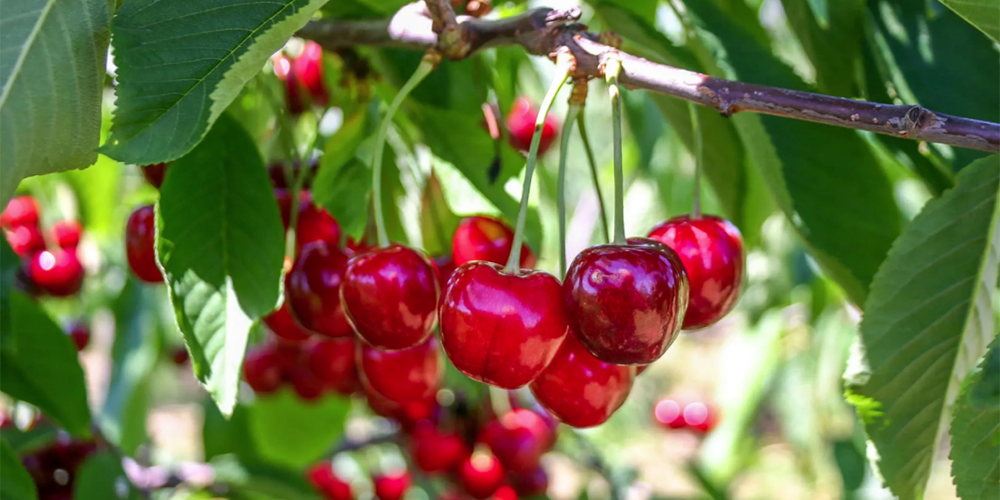Growwing Cherries

Sweet cherries are the variety most often found in markets. They have a thick, rich, and almost plumb-like texture. Sweet cherries grow in hardiness zones 5 to 7; they are self-sterile and best for an orchard or a large garden. You’ll need at least two or three trees, as they’ll need to pollinate each other. However, a recent and exciting development in sweet cherries is the dwarf, self-pollinating cultivar, ‘Stella’.
Sour cherries are not usually eaten raw, but are widely used for preserves and other cooking uses. Sour cherries are much smaller than sweet cherries and all varieties are self-fertile. They grow in zones 4 to 6.
Cherry trees generally start bearing fruit in their fourth year; dwarf trees bear fruit a year earlier. One mature, standard-size tart or sweet cherry tree will produce 30 to 50 quarts of cherries each year; a dwarf tree, about 10 to 15 quarts.
Planting
- Plant cherries in the late fall or early spring (when the ground is soft and has a higher moisture content).
- For sweet cherries, make sure the different varieties will pollinate each other.
- Plant in a sunny site with good air circulation; avoid planting near trees or buildings that shade.
- Cherry trees need deep, well-drained soil.
- Space sweet cherries 35 to 40 feet apart; dwarfs, 5 to 10 feet apart.
- Space tart cherries 20 to 25 feet apart; dwarfs, 8 to 10 feet apart.
- Set trees on standard rootstocks with the graft union a few inches below the soil level. Set trees on dwarf rootstock with the graft union several inches above the soil level.
- When planting fan-trained trees, construct the necessary supports before planting. Plant fans only 12 to 15 feet apart.
- For bareroot trees, place the rootstock on a small mound of soil in the center of the planting hole, and spread the roots down and away, trying not to bend the roots. Backfiill with soil.
- For container-grown trees, first remove the rootball and on its side; cut through the roots with shears. Don’t cover the top of the root-ball.
Care
- There is no difference in care between sour and sweet cherries.
- Apply mulch to retain moisture.
- Drape netting over trees to protect the fruit from birds.
- Water routinely in dry areas.
- Thinning the fruit is not necessary for cherry trees, as they typically thin naturally in early summer.
- Prune trees every year in late winter to encourage the growth of new fruiting wood. Don’t prune in the fall.
- Fertilize each spring until trees start to bear, then fertilize only after harvest each season.
Pest/Diseases
- Aphids
- Japanese beetles
- Caterpillars
- Brown Rot
- Black Knot
- Bacterial Canker (cut out any branches with signs of black knot or bacterial canker as soon as possible)
- Birds
Harvest/Storage
- Pick fruits only when FULLY ripe (dark red, black, yellow); the sugar content rises the few days before fully ripened.
- Be ready to harvest within a week’s time. Eat or cook immediately.
- Pick fruits when firm if they are to be frozen.
- Be sure top pick with the cherry stem so you do not tear into the fruit, however, take care to lead the fruit spur to produce fruit next year.
- Hand-picking may injure the shoots and cause infection; Cut the stalks with scissors.
- Remember that cherry trees do not bear fruit until their fourth year. Thereafter, they should produce about 30 to 50 quarts of cherries each year.
Recommended Varieties
Sweet Cherries
- Early – ‘Black Tartarian’
- Midseason – ‘Bing’
- Late – ‘Stella’
Sour Cherries
- Early – ‘Early Richmond’
- Midseason – ‘Montmorency’
- Late – ‘Meteor’
Website: www.almanac.com